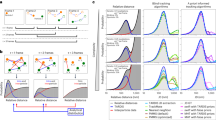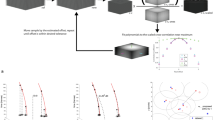Abstract
IN the automatic counting and sizing of a population of particles on a glass slide or a photograph1 errors arise when adjacent particles are closer than the limit of resolution of the counting apparatus or when they overlap along the scanning track: in both cases the two particles are counted as a single particle of larger size. If the centres of the particles are randomly distributed along the scanning track and the number counted is large, the probability that two successive centres will be less than a distance Z apart is  where α is the mean number of particles per unit length of track. If the order in which particles are encountered along the scanning track is random with respect to size and their projections on the plane of the track are circular, the probability that the sum of the radii of two successive countable particles is between u and u + du is:
where α is the mean number of particles per unit length of track. If the order in which particles are encountered along the scanning track is random with respect to size and their projections on the plane of the track are circular, the probability that the sum of the radii of two successive countable particles is between u and u + du is: 
This is a preview of subscription content, access via your institution
Access options
Subscribe to this journal
Receive 51 print issues and online access
$199.00 per year
only $3.90 per issue
Buy this article
- Purchase on Springer Link
- Instant access to full article PDF
Prices may be subject to local taxes which are calculated during checkout
Similar content being viewed by others
References
Walton, W. H., Nature, 169, 158 (1952).
Wicksell, S. D., Biometrika, 17, 87 (1925).
Author information
Authors and Affiliations
Rights and permissions
About this article
Cite this article
HODKINSON, J. Coincidence and Overlap Errors in the Automatic Counting and Sizing of Particles. Nature 171, 351–352 (1953). https://doi.org/10.1038/171351a0
Issue Date:
DOI: https://doi.org/10.1038/171351a0
This article is cited by
-
Imaging very high energy gamma-ray telescopes
Experimental Astronomy (2009)
Comments
By submitting a comment you agree to abide by our Terms and Community Guidelines. If you find something abusive or that does not comply with our terms or guidelines please flag it as inappropriate.



